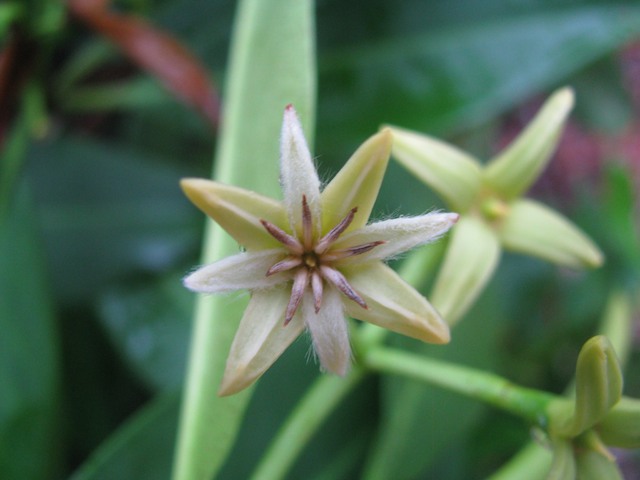We all know that parting presidents often like to further their agendas surreptitiously on their final days. Well this has got to be the winner: The Environmental Protection Agency, under President Bush, is on the verge of approving a proposal that would allow coal-mining companies to dump mining waste directly into flowing streams, filling in the streams entirely and destroying all the life in them. Since 1983 the Stream Buffer Zone rule has prohibited mining within 100 feet of flowing streams, but now the Bush administration and the Office of Surface Mining are trying to push through an under-the-table, last-minute effort to remove this protection. If the EPA approves the repeal, it will be perfectly legal for coal companies to blow off the top of a mountain, then dump the waste straight into streams, killing the rare salamanders, fish, and other species that live in Appalachian waterways. EPA Administrator Johnson could make the decision at any moment, so time is critical. Please take a minute to tell the EPA not to approve the Stream Buffer Zone revision, and pass this alert along to as many of your friends as possible.
Please Click Here To Take Action!
Permaculture and the Financial Meltdown of 2008
I recently attended a two week permaculture design intensive, at the Occidental Arts and Ecology Centernear Sebastopol, CA. Over nine hours of class every day for two weeks including a design project with a randomly assigned group of the students, the class was no vacation! But it was magical. For starters, OAEC is a permaculture paradise. Operated for over 15 years as an active permaculture farm and community, there are incredible gardens and edible landscapes all over. With ecologically designed structures interspersed over the ample grounds, including a few light straw structures, cob benches and aerating fountains, the place is a showcase for how elegant and functional permaculture can be. And the place is populated by an incredible and vibrant group of teachers and educators. Their passion for transformation is palpable. And then there were the classes: Having not been in such an intensive learning environment for many years, I literally drank in the knowledge that was amply communicated to us. Incredible classes on the foundations of permaculture, community and communication as well as a huge assortment of permaculture technologies including landscaping, key line, swales as well as energy efficiency in building design and farming practices. Truly information overload of the best sort. And did I mention my fellow students? We were truly blessed with such a warm, motivated and incredibly fun group of students ranging from 17 years old to over 60. A diverse and incredibly well matched group, I fell in love with all of them.
And literally in the middle of our course, the foundation of our so called free market economy collapsed! I can’t think of a better place to have been than on a permaculture farm! News of the 700 billion dollar bailout was met with swale design and harvesting from organic gardens and the possibility of living a sustainable life. It was a truly breathtaking contrast. And it has since put me into a place of examining the life I am living: I am part of an industrialized world, loving the conveniences and ease of our lives. Yet recognizing that at some level our lives our ultimately unsustainable. And questioning the choices I am making constantly, recognizing my disconnection from community, from the earth. I know that these times are a blessing, giving us all the opportunity for reevaluating our lives, and hopefully, soon, being able to make the right decisions for a more sustainable future.
From the Sublime to the Mundane – Hope Springs Eternal

Ever since the morning of Wednesday, November 5th, the sun seems to shine with a brighter patina in the morning. On Tuesday, November 4th, I picked up Sandra at the airport, she had just returned on Northwest Air from 4 days of door-to-door canvasing in Columbus, OH. At 6:31 PM, Pacific time, on our way to the home of dear friends to watch the results, NPR announced OH for Obama. Sandra cried with joy. The knowledge that her efforts and those of everyone involved in the campaign had paid off was both emotional and overwhelming. A the light of a new dawn was rising across America.
The reality of the next morning came in with the new light, Sandra heading to the office, the kids off to school. As she walked out the door, she handed me a copy of “World Traveler”, Northwest Airlines Magazine and said, “take a look at this article on Green Travel“. The article is about EcoTravel and featured locations worldwide and companies like REI Adventures. Interestingly, at the end of the article is a side bar on how to “Go Green with NWA” introducing their carbon offset program with The Nature Conservancy.
We should probably develop our own carbon offset program with our affiliated non-for profit conservation project, Rainforest2Reef.
Air travel will be severely impacted by issues such as Peak Oil and Carbon Offsetting and we look forward to being part of the solution. Tomorrow offers us hope, hope that we can change things for the better, change as large as the first African-American President or as small as the individual sacrifices we will need to make in our daily life to make this change work for all of us. It is a new dawn in America and around the world.
Turtle Stats in for Sep and Oct 2008
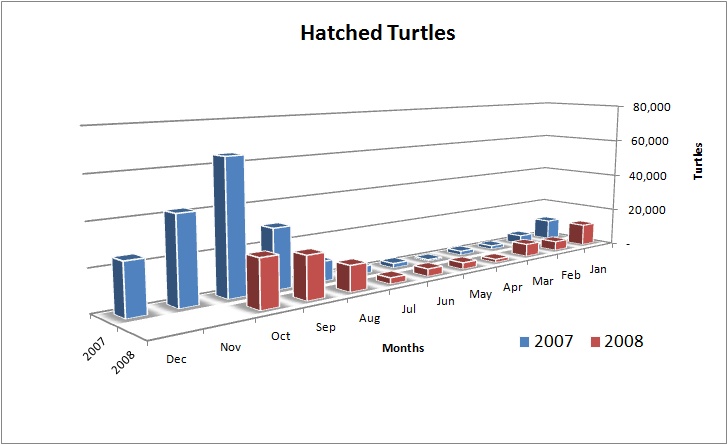
The turtle stats are in from the volunteers at the Tortuga Feliz turtle sanctuary in Playa Viva. The total number of turtles hatched and released has gone down significantly in the last two months (See graph). I have asked the team of volunteers to report in on the reasons they attribute to this reduction. Earlier in the year the head of the volunteers expressed his concern that they were short on resources especially local volunteers that give of their time to find and secure turtle nets. As Playa Viva comes closer to completion (Spring 09), we look to organize a volunteer program to bring students and other volunteers in to stay in Playa Viva as guests and participate in this important endeavor. We hope you will join us. Let us know if you are interested.
Mangroves at Playa Viva
Three types of Mangroves grow in México: Rhizophora, Avicennia, Laguncularia and Conacarpus. Though Conacarpus is not strictly speaking a mangrove, it is so interrelated in the ecosystem it warrants inclusion in the category
Initially in playa viva there were only Laguncularia (white mangroves), and Concarpus (button mangrove), but after more then one year of working with the ecosystem, I was able to add Rhizophora (red mangrove) and Avicennia (Black mangrove). I found both species in near by estuaries and introduce them in the wetlands restoration program of Playa Viva.
The Mangroves are an extremely valuable part of the Playa Viva ecosystem—in every stage of their growth cycle. Mangrove leaves are an important source of food for a vast array of life in the estuary system. When the leaves fall into the water, before decomposing, they become habitat of bacteria that get eaten by Protozoa and microfungi and this by crustacean and so on. Thus a whole chain of life starts that, together with the costal reef system, is responsible for two thirds of all aquaculture in the tropics.
Mangroves also offer valuable protection for the estuary banks against erosion, hurricanes, storms and tides and excessive salinization of the land. The trees also offer habitat to many species of birds, insects, mammals and amphibious.
Yet these trees are also very vulnerable and have become increasingly in danger of extinction in Mexico and throughout the world. Mangroves are destroyed mainly by discharge of Chemical contaminants, drainage, and by cutting them to build waterside developments. There are currently around 2,191,233 acres of Mangroves in Mexico with more than 54,364 acres being destroyed every year.
In Playa viva we are restoring and preserving 125 acres, The United Nations determined that the environmental services of 1 acre is around 300,000 US dollars per year.
The real question here is: How can we develop the land while also restoring and preserving our valuable mangrove system?
Environmental Impact Study Approved
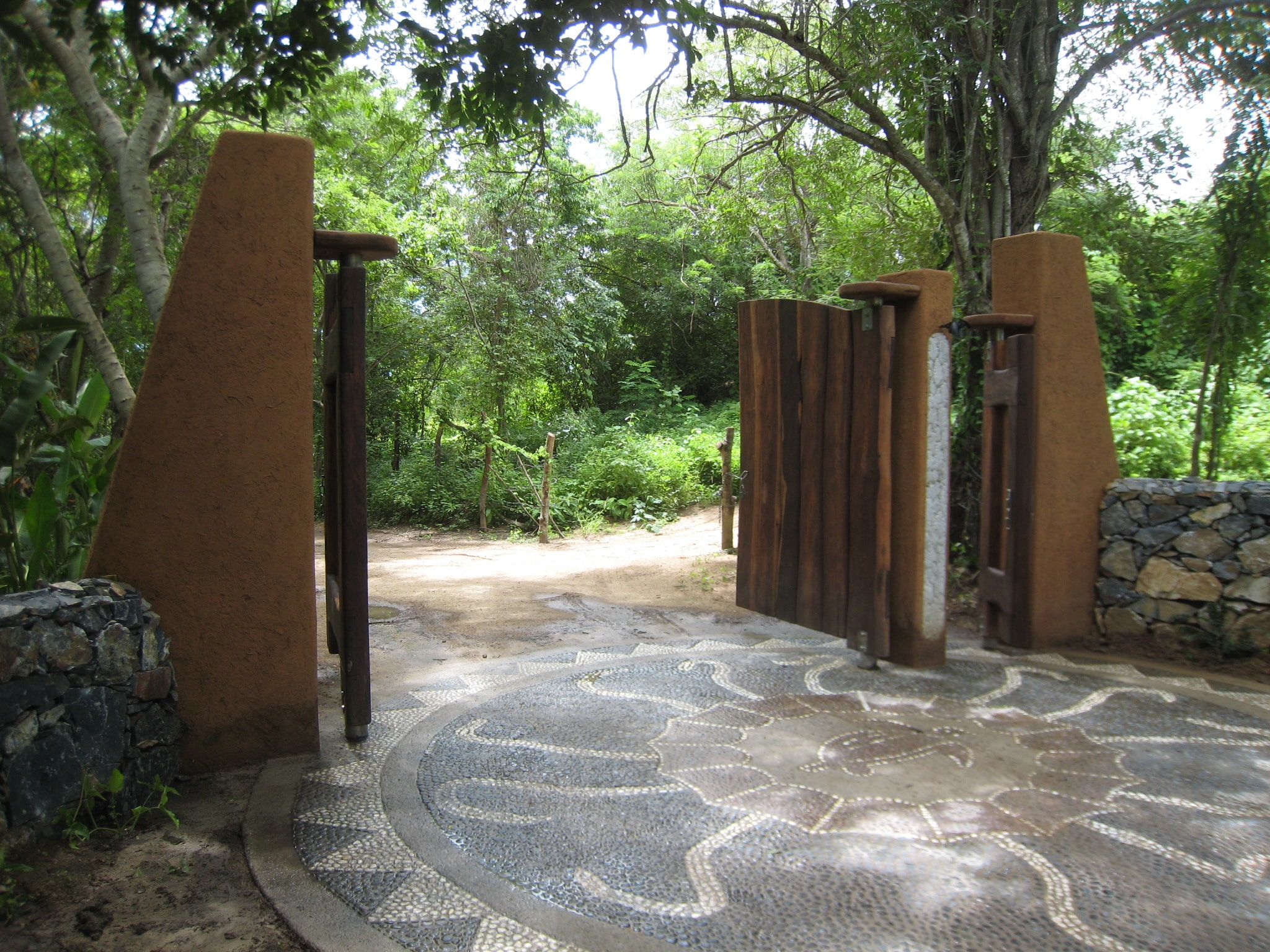 A few weeks ago we got the final approval of our environmental impact study (abbreviated to MIA in Spanish). This is great news. This study took over 18 months from inception through to final approval and took the work of a large team including environmental lawyer Alberto Szekely, Biologist Gerardo Ceballos, Architect Michel Lewis, Permaculture Specialist Odin Ruz and many more including Jorge Ramirez who compiled and submitted the MIA. Thank you to the entire team especially those not mentioned here for a job well done. We hope this MIA will serve as an example to other developers on how to build in a green, sustainable and regenerative manner.
A few weeks ago we got the final approval of our environmental impact study (abbreviated to MIA in Spanish). This is great news. This study took over 18 months from inception through to final approval and took the work of a large team including environmental lawyer Alberto Szekely, Biologist Gerardo Ceballos, Architect Michel Lewis, Permaculture Specialist Odin Ruz and many more including Jorge Ramirez who compiled and submitted the MIA. Thank you to the entire team especially those not mentioned here for a job well done. We hope this MIA will serve as an example to other developers on how to build in a green, sustainable and regenerative manner.
This photo shows the entrance to Playa Viva, one of the first components completed by the architect/builder Michel Lewis. The door was built by master carpenter David Martinez who built Casa Viva. Note the mosaic of the jellyfish with the Playa Viva turtle logo in center. From this entry way, you are still must travel at least 1.5 kilometers to get to the beach going past the archaeological site, mango grove and coconut grove to get to the location where we will be building the tree-houses on the beach.
Please let us know if you plan on visiting the Zihuatanejo/Ixtapa area so we can arrange a tour of Playa Viva.
Unplugged and Loving It
In the Escapes Section of The New York Times, September 12, 2008, Steve Bailey writes in the article entitled, “Unplugged“, “Many people say that they want their weekend place to be a refuge from the modern world, a place to disconnect and reconnect.” Wow. We couldn’t have said it better ourselves. While many folks ask us how we can create a place that is luxury and not have “a TV in every room”, the answer is simple, luxury is not about granite counter tops and gold plated fixtures, nor is it about TV’s, mini-bars and hairdryers in every room, luxury is about really disconnecting and reconnecting. Luxury is about creating an environment that allows you to disconnect and reconnect with grace.
Steve goes on in the article to state, “But a little tech subtraction can add up to the weekend experience you really want, creating a sense of togetherness in what might some might consider a poorly equipped vacation house.” 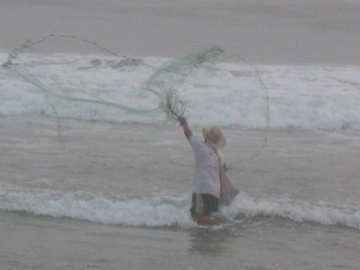 We have owned and operated another property, Casa Viva, for about 7 years. We have watched guests go through a process of detoxing from the need to be connected all the time. You see them pacing, as if they have forget something or something has forgotten them. Then eventually they sit, still, for a moment or maybe longer and they peer out farther than the distance between them and a screen (either in their hand or on a desk) and they see nature. They see the iguana basking in the sun of a nearby rock, the pelicans diving for fish in the shore just beyond, the fisherman tossing his net out to sea, and the moment grabs them and they reconnect. Mr. Bailey, thank you for confirming our basic assumptions behind the design of Playa Viva.
We have owned and operated another property, Casa Viva, for about 7 years. We have watched guests go through a process of detoxing from the need to be connected all the time. You see them pacing, as if they have forget something or something has forgotten them. Then eventually they sit, still, for a moment or maybe longer and they peer out farther than the distance between them and a screen (either in their hand or on a desk) and they see nature. They see the iguana basking in the sun of a nearby rock, the pelicans diving for fish in the shore just beyond, the fisherman tossing his net out to sea, and the moment grabs them and they reconnect. Mr. Bailey, thank you for confirming our basic assumptions behind the design of Playa Viva.
Mixed Turtle Statistics in for Aug
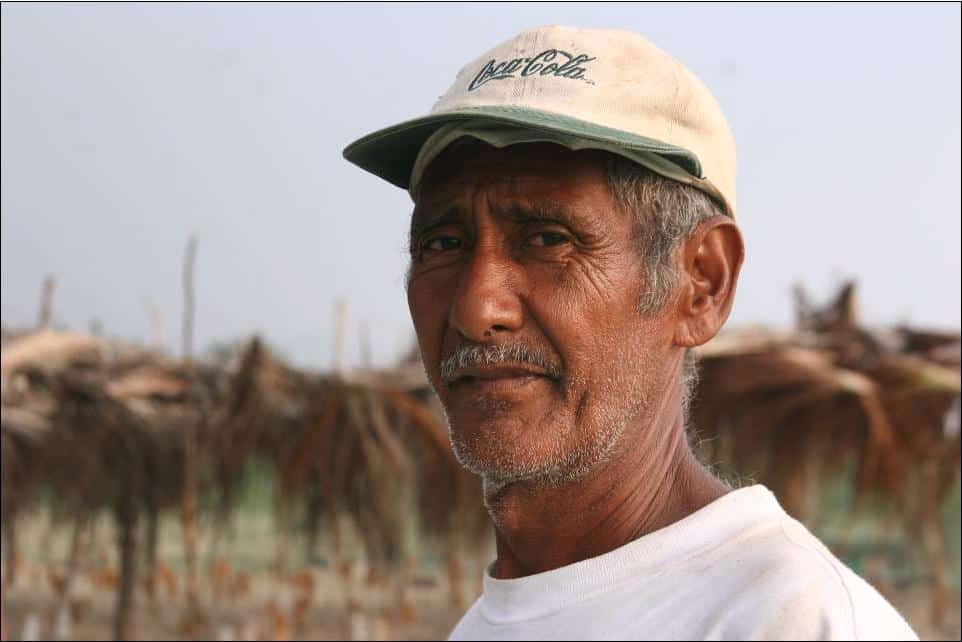
The turtle stats for August for the Tortuga Feliz Turtle Sanctuary at Playa Viva are giving us mixed results. We had an increase of over 20% in the number of turtles hatched in August 08 over 07, but the total number of eggs currently in the nursery is down by more than 50% from same time last year (from over 77K in Aug of 07 to less than 34K in Aug of 08). We will have to get more information from the team in Juluchuca. Much of this may be due to having fewer resources (volunteers are down from last year). Playa Viva is still committed to supporting the efforts of the Tortuga Feliz and we hope you can join us soon on the beach for a turtle release.
Stay the Course
 The news and media have been filled with images of the Olympics and now the Democratic convention. But one piece of news that recently caught my eye. With all the bad news, Honda Motors reported a profit while all the major automakers are feeling major pain. So why is that? According to a recent article in the New York Times (“Honda Stays True to Efficient Driving“), “Honda Motor never veered from its mission of building fuel-efficient, environmentally friendly cars like its Accord sedan.” And it continues, “‘I remember being at the Tokyo Motor Show in the mid-1990’s and talking about the environment’ said Ben Knight, head of engineering at Honda’s North American division.’The reaction was there’s no return on that.'” As we head into the school year and look to open Playa Viva in Spring 09, it is articles like this that keep us focused on our mission and give us a sense of security about our plans and visions. Join us in realizing a better future, join us in promoting companies like Honda that stay true to longer-term vision and values for improving the environment.
The news and media have been filled with images of the Olympics and now the Democratic convention. But one piece of news that recently caught my eye. With all the bad news, Honda Motors reported a profit while all the major automakers are feeling major pain. So why is that? According to a recent article in the New York Times (“Honda Stays True to Efficient Driving“), “Honda Motor never veered from its mission of building fuel-efficient, environmentally friendly cars like its Accord sedan.” And it continues, “‘I remember being at the Tokyo Motor Show in the mid-1990’s and talking about the environment’ said Ben Knight, head of engineering at Honda’s North American division.’The reaction was there’s no return on that.'” As we head into the school year and look to open Playa Viva in Spring 09, it is articles like this that keep us focused on our mission and give us a sense of security about our plans and visions. Join us in realizing a better future, join us in promoting companies like Honda that stay true to longer-term vision and values for improving the environment.
Metatepetl: Bringing the Archaeological Site at Playa Viva to Life!
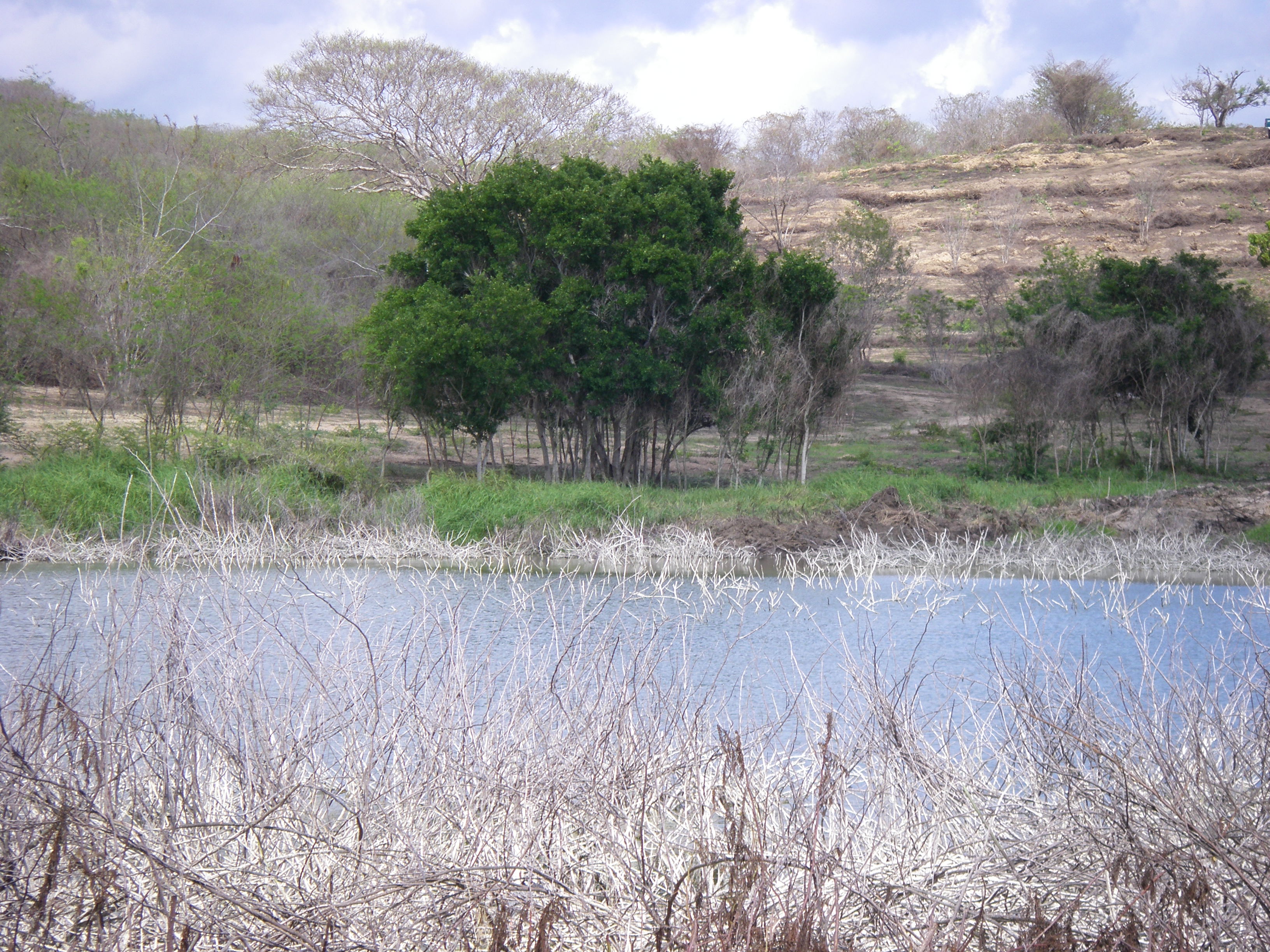 Odin Ruz, our permaculture expert, has been working magic on the land at Playa Viva. Odin has been clearing the archaeological site, paying careful attention to only work the land for agricultural purposes (and to preserve any archaeological artifacts that becomes exposed). Since we purchased the land several years ago, we have had evidence that the Aztecs and possibly older civilizations had occupied this piece of land and used it extensively for farming, and also for religious purposes. Interestingly, there was evidence of terraced gardens, and the lagoon appeared to be man made. Well, with Odin’s careful hand, we have confirmed that in fact terraces on the land around the lagoon are perfectly level contours, indicating that this land was once farmed extensively, most likely by the Aztecs over 500 years ago. Metates, or ceramic bowls along with grinders are showing up as we clear the land: These instruments were traditionally used to grind corn into flour. Also the lagoons show distinct evidence of having been influenced by humans, probably anywhere from 500 to thousands of years ago! The land is coming alive! To read Odin’s full report, click here!
Odin Ruz, our permaculture expert, has been working magic on the land at Playa Viva. Odin has been clearing the archaeological site, paying careful attention to only work the land for agricultural purposes (and to preserve any archaeological artifacts that becomes exposed). Since we purchased the land several years ago, we have had evidence that the Aztecs and possibly older civilizations had occupied this piece of land and used it extensively for farming, and also for religious purposes. Interestingly, there was evidence of terraced gardens, and the lagoon appeared to be man made. Well, with Odin’s careful hand, we have confirmed that in fact terraces on the land around the lagoon are perfectly level contours, indicating that this land was once farmed extensively, most likely by the Aztecs over 500 years ago. Metates, or ceramic bowls along with grinders are showing up as we clear the land: These instruments were traditionally used to grind corn into flour. Also the lagoons show distinct evidence of having been influenced by humans, probably anywhere from 500 to thousands of years ago! The land is coming alive! To read Odin’s full report, click here!

